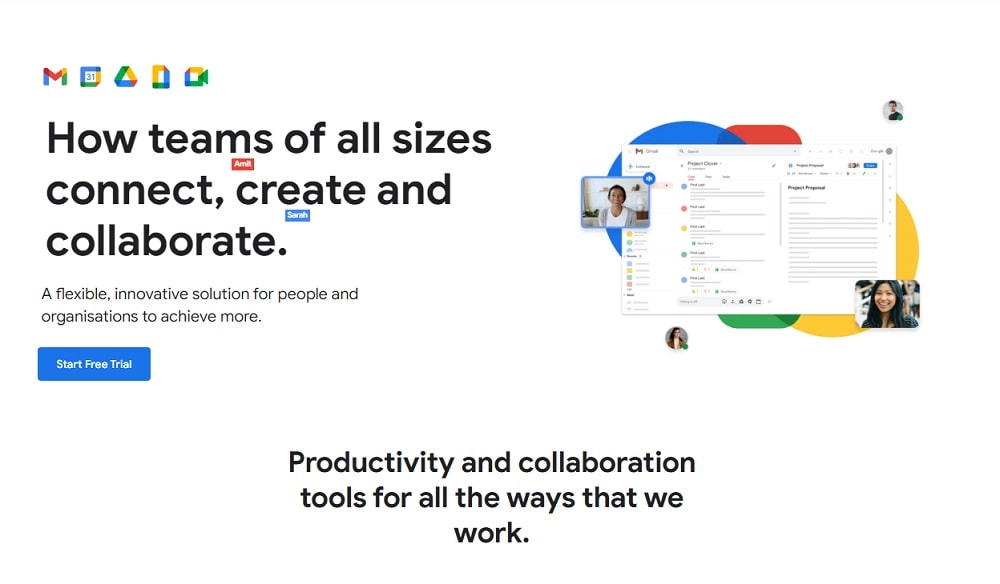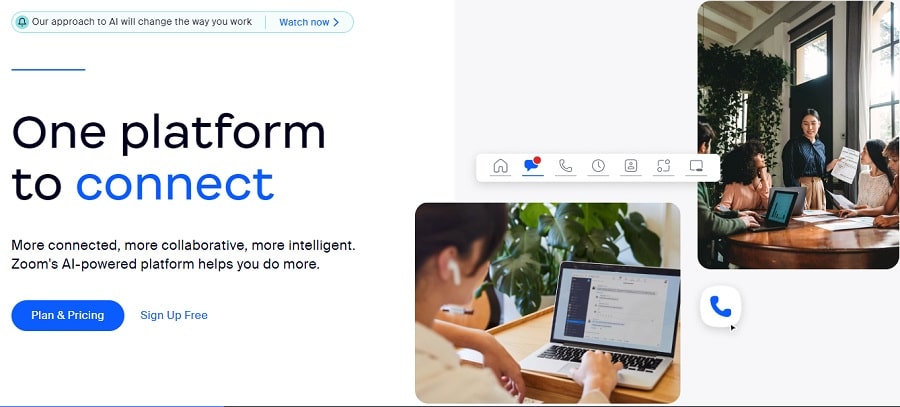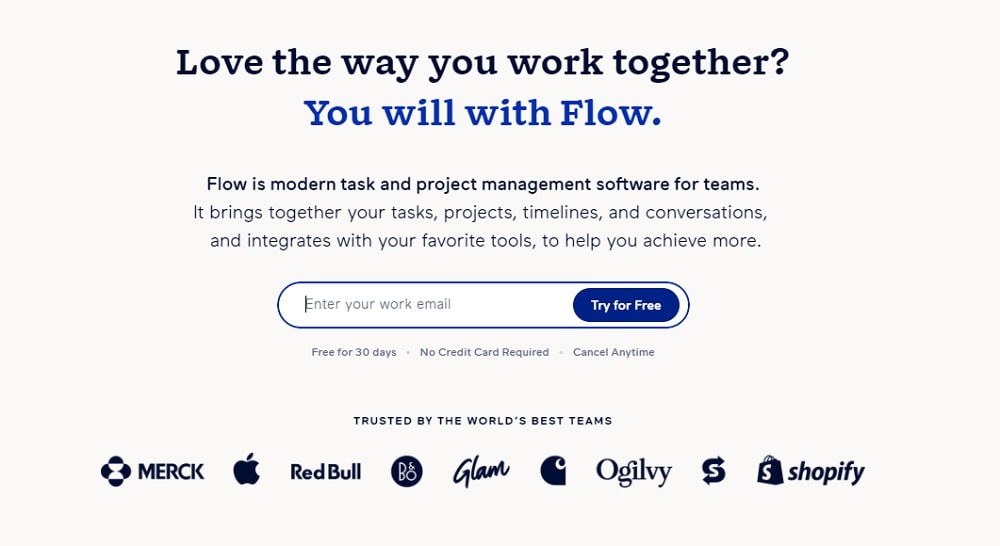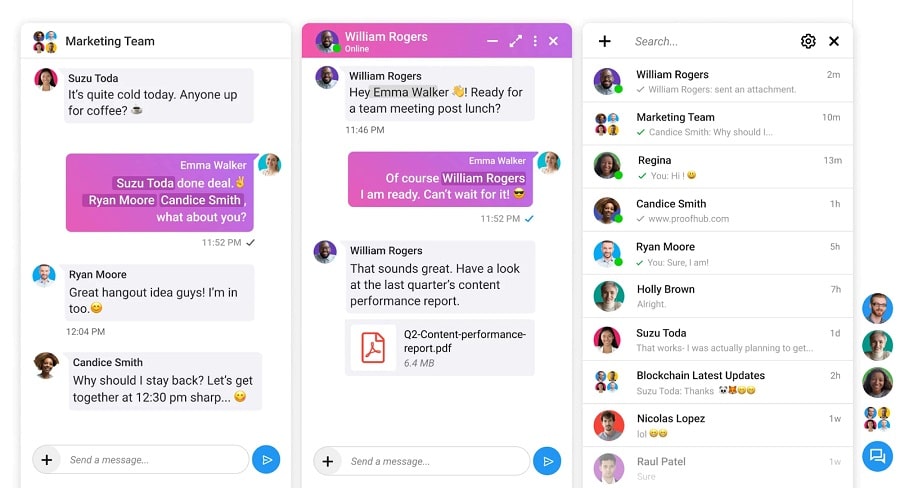Introduction
Gone are the days when affording real-time collaboration was up the creek, and relying on one-on-one meetings and long email threads were the only compelling alternatives to run the show. I have compiled all that you need to define seamless collaboration among teams in the modern-day workspace.
Collaboration is a key part of the success of any organization, executed through a clearly defined vision and mission and based on transparency and constant communication. – Dinesh Paliwal
Spot on!
But speaking of real-time collaboration, does its significance in the era of a globally dispersed workforce remain the same?
No, it doesn’t.
The concept extends its meaning beyond merely staying connected and functioning together but rather idealizes efficiency, flexibility, and agility to maximize productivity and avoid unnecessary delays.
Employees are expensive, and so are their contributions.
Period!
Making the most of the collaborative efforts of employees while practicing the above-mentioned three parameters is crucial to keep them motivated and engaged amid the prevalent turbulent times and uncertainties.
Remember, every effort wasted adds up to lost opportunities.
Trust me, you won’t like bumping up against regrets.
Why am I saying so?
Because I’ve witnessed its impact firsthand and learned to appreciate the value of team efforts the hard way.
Read more: Build a strong foundation of collaboration with the best online collaboration tools.
What does real-time collaboration mean?
When you see multiple team members working together from different corporate campuses or any location across the length and breadth of the globe – without any time lag – with or without technology – you are witnessing real collaboration in action.
Real-time collaboration refers to the synchronized and seamless interaction and collaboration between employees on different projects, tasks, files, or documents where they communicate and share feedback, ideas, and information, almost instantly regardless of any geographical boundary.
With the prevalence of hybrid and remote work in 2024, the need to have real-time collaboration has escalated to the scale of being far more than just necessary amid the scattered workforce.
How does real-time collaboration work?
To replicate the traditional office-like feel in the realm of working remotely, you need to make the move to leverage a variety of technological solutions to connect team members and allow them to function efficiently on a project or task.
This way, with digital platforms, you not only facilitate optimal outcomes but also can track productivity, promote efficient decision-making, and greater teamwork, and ultimately improve job satisfaction and team morale in the scattered job setup.
P.S. – These specific technologies used will vary depending on the needs of the team and the project.
Check out: 52 Best online collaboration tools for 2024
Why is real-time collaboration essential?
Real-time collaboration offers significant benefits that will do all the convincing to try it out and understand the reasons behind it being essential for successful businesses.

- Fosters transparency – Real-time collaboration creates a transparent ecosystem for everyone in your team, eliminating the need for each of them to be in the same room. Here, team members can easily access and share information, track progress, and exchange insights, reducing the risk of knowledge silos to ensure everyone is informed and aligned with the movement of the task progress.
- Improves productivity – When teams operate in harmony and collaboration, the outcome translates to the accomplishment of tasks in less time. When every team member collaborates simultaneously on documents, files, and projects, it cuts down the scope of any misunderstanding and time wastage by creating a streamlined and productive workflow.
- Solidifies team cohesion – Distances lose their significance when teams work together in collaboration and interact immediately. This lays a stronger foundation of trust, understanding, and unity where team members actively contribute to committing towards the common achievement of goals. All the diverse perspectives collaborate in sync to realize a shared sense of accomplishment.
- Saves time and effort- With instant access at your fingertip, you don’t need to worry about your time and efforts going down the drain. The real-time collaboration tools create a unified environment where you can easily identify bottlenecks, track task progress, brainstorm solutions, and visualize task dependencies to identify where progress is stalled. Followed by taking actionable measures to address those challenges promptly and keep projects on track.
- Better work quality – The turmoil of navigating back and forth communications and interactions to get things done is eradicated to the roots when employees can provide and receive direct and instant feedback. This results in task progress rolling out to the final stage sooner without the instructions being lost or misunderstood along the way.
Read more: Get to know the significance of collaboration to prepare a healthy workplace for your teams In 2024.
Best practices for implementing real-time collaboration
Achieving real-time collaboration is like having a dynamic compass that you can use to keep your teams navigated toward upstream success in the remote and hybrid work era.

So, here are some commendable ways to improve your real-time collaboration game –
- Use project management tools – Since introducing real-time collaboration to the workspace is our goal, facilitating the technologies that can enable seamless collaboration is equally crucial. ProofHub, for example, is a project management and team collaboration tool that allows you to manage tasks, set deadlines, communicate goals, set priorities, and collaborate in real-time, making it easier for you to fix the drip.
- Prioritize Synchronous Communication – Real-time chats, instant feedback, and a smooth flow of information nip the unnecessary delays and misunderstandings. Recognizing and addressing problems instantly empowers teams to prevent major mistakes in real time. However, a perfect blend of synchronous and asynchronous communication ensures a continuous flow of information without requiring physical presence.
- Establish clear expectations – By making sure to inform your team about what is expected from them, you pave the way for achieving desirable results. Ensure not only to just define your goals and objectives but also to set clear expectations for core working hours, mid-breaks, and response time, ensuring minimized delays and effective real-time communication and collaboration.
- Encourage teamwork and open communication – When cultivating collaboration among team members seems hard, let encouragement play its role. You can achieve this by facilitating cross-functional collaboration or encouraging team members to share their ideas, thoughts, concerns, and opinions without the fear of being judged. Make them understand the value of collaboration by highlighting its potential and fostering an inclusive environment.
- Introduce a centralized platform – Achieving real-time collaboration for your organization with a single-space platform is much more efficient when all your resources, progress, and communications are housed in a unified space your team spends less time looking around for solutions and waiting for knowledge access. This way you introduce your team to a cohesive environment where information is available in a single click.
Read the in-depth review of 13 best content collaboration tools to facilitate seamless collaboration.
What are the challenges of traditional collaboration?
According to a report by the leadership consulting firm Fierce, Inc., Lack of teamwork is cited as the primary cause of workplace failure by 86% of employees in leadership roles.
While traditional collaboration plays a prominent role in today’s workplace setting, the challenges that teams encounter in fostering a culture of adaptability and inclusivity are noteworthy.

Below mentioned are some of the key challenges –
- Asynchronous communication – Long email threads and frequent in-person meetings lead to delayed responses, time lag, increased misunderstandings, communication overload, and sluggish decision-making. And the struggles become even more pronounced when time zones differ and distances expand, hindering efficient collaboration.
- Lack of clarity – When goals and objectives are not communicated to team members, expectations to attain greater outcomes drop right away. The lack of transparency results in misaligned goals, missed deadlines, and mindless work making it difficult for both leaders and teams to make informed decisions.
- Time zone differences – The major challenge of traditional collaboration arises when the instant contribution of team members residing in varied global locations is required. The negative results amplify when working hours overlap, resulting in communication delays, prolonged decision-making processes, and decreased overall productivity.
- Organizational silos – This is the most pressing challenge businesses with distributed work teams can encounter. It represents the communication and knowledge-sharing barrier between different departments, teams, or functions within an organization, resulting in limited problem-solving, fragmented project execution, and obstructed cross-functional collaboration.
- Resistance to change – Collaboration becomes almost impossible to achieve when every individual in the organization gets comfortable working in their style or older methods. Some of them even deny straight away to work in collaboration for various reasons, resulting in lost knowledge, expertise, and valuable insights.
Read More- Address the common communication challenges to fix them to achieve successful accomplishments.
5 Best real-time collaboration tools
Let me just put it this way – Imagine having a team working on developing a social media calendar. Where a content manager compiles a list of ideas and key content, and a graphic designer works on creating graphics. Moving forward, the content writer drafts engaging and compelling captions following with the social media manager’s approval.
But the question remains – Where do they all meet? How will the feedback and crucial information be provided? How will the collaboration be facilitated amongst team members? How will they all be able to ensure a coordinated and strategic approach to the completion of the task?
The answer to all the questions remains – real-time collaboration tools
To help you draw out the utmost success from effective and collaborative teamwork, I’ve closely looked for the features of the popular collaboration tools below.
1. ProofHub

ProofHub is an intuitive all-in-one project management and team collaboration tool with an excellent interface and robust features designed to create a cohesive environment for your team to seamlessly collaborate and communicate.
The tool provides a shared collaborative platform across teams to explore and identify each others’ ideas, strengths, and perspectives. It empowers you to strategically and effectively utilize its collaboration capabilities such as instant chat, discussion, and notes to get things done faster in real-time.
Key features
- Collaborative workstation with a centralized task management dashboard to manage tasks effectively.
- Online proofing to annotate and give feedback on files, designs, and documents.
- Built-in chat to have one-on-one or group communications in real time.
- Customized labels, fields, and roles to set realistic goals for teams.
- Discussions to have centralized and organized conversations to loop in team members.
- Shared notes to save project information, meeting updates, or anything you specific.
- Effective custom reporting to provide real-time in-depth insights and information.

The best part is you get an all-in-one platform, where you can create projects, delegate tasks, track their progress and time, communicate in real-time, and get customized reports- all in one place and with a flat rate pricing.
Experience a whole another level of collaboration with ProofHub. Explore features here.
2. Slack

Slack is another well-known platform in the list of real-time collaboration tools that allows you to collaborate in a shared space by eliminating the email dependence to have team conversations in team-specific channels and private chat rooms.
Key features
- Real-time collaboration tool
- One-on-one and group chat to keep team members in the loop
- Built-in audio and video calls
- Shortest and simplest learning curve
3. Google Workspace

Google Workspace, formerly known as GSuite, is a comprehensive bundled solution that caters to your collaboration needs by bringing all of its collaboration tools like Gmail, Docs, Sheets, Calendar, Meet, Chat, Drive, and more all together in one place.
Key features
- Built-in control, encryption, and verification
- Shared calendars to track everybody’s schedule
- Easy remote collaboration on documents, slides, and spreadsheets
- Effective file storage in clouds
4. Zoom

With its utmost user-friendly interface, the one platform that got you covered even in the tough times of the pandemic is no other than Zoom. The platform is well-known for its interactive video-conferencing application and screen-sharing option.
Key features
- User-friendly platform with easy setup
- Zoom scheduler for streamlined scheduling
- Zoom huddles to bridge distances
- Intuitive VoIP phone system to make phone calls
5. Flow

Flow promotes cross-team collaboration by housing everything you need to manage projects and collaborate in a team-friendly infrastructure. By understanding your teams’ strengths and weaknesses you can easily design customized workflow that complements your business needs.
Key features
- Directory to assess details of teams
- Collaborate on projects in different file formats
- Single Sign-On for enhanced security
- Automatic news feed to stay updated
Master real-time collaboration with ProofHub
ProofHub houses everything you need, all together in one place to collaborate almost instantly. This work management tool handles everything from creating and assigning tasks to allowing you to collaborate in real time with built-in chat and discussions. And that’s just not all of it!

1. Visualize your workflow – Even when you are short on time or the go, ProofHub allows you to get a bird-eye view quickly with its admirable visual workflows. This way you can quickly identify bottlenecks to your task progress, and rectify everything to stay on top.

2. Communicate clear expectations – ProofHub eradicates the chances of ambiguity by allowing you to precisely outline and communicate your expectations. You can notify every team member of your clear project objectives, requirements, and timelines to enhance responsiveness and accountability.

3. Instant messaging and chat – With ProofHub’s built-in chat you can slide into your team members’ inboxes in no time regardless of their geographical location or time zone. Apart from this, ProofHub discussions curate a common place for you to share or discuss important information and updates with your team members.
4. Document collaboration – When you talk about real-time collaboration, how dreadful does the accumulation of feedback in long conversation threads feel? Pathetic right?
But with ProofHub, you can proof files and designs with its built-in proofing tool. This tool enables you to preview, review, proof, and provide feedback on documents all in one place and in real time to minimize delays.

If you want to experience what a true real-time collaboration can do for you. Then ProofHub can be your great ally.
Transform the way your team collaborates with ProofHub. Get started for free.
Related articles:
- Experts share thoughts: A team collaboration strategy that helped them save projects from failing
- 8 Steps to create a collaborative working environment
- Collaboration skills for managers: everything you need to know
- 52 Best online collaboration tools for 2024
- 9 Benefits of cross-functional team collaboration
FAQs about real-time collaboration
What is the difference between real-time collaboration and traditional collaboration?
The major distinction between real-time collaboration and traditional collaboration lies in their timing and approach. Where real-time collaboration promotes synchronous interaction, traditional collaboration can both be synchronous and asynchronous depending on the context. The former brings everyone on the same page altogether, latter follows a sequential approach to get things done.
What are the types of real-time collaboration?
The types of real-time collaboration vary as per users’ requirements and need to collaborate and interact in real-time without signal delays. Here are some of the common real-time collaboration ways:
- Instant messaging and chat
- Video conferencing
- Screen sharing
- Document editing
- Virtual Whiteboards
What is an example of real-time collaboration?
The right example of real-time collaboration is a group of team members coming together to work on a task or project. It involves more than just working on a project to move it to the final stage, but setting goals and objectives, communicating clear timelines, and sharing responsibilities for effective workflow.
What is the difference between teamwork and collaboration?
Teamwork and collaboration differ from each other in a broader sense. Where teamwork signifies the coordinated efforts of a team invested to achieve a common goal or objective., collaboration leverages diverse perspectives, expertise, and knowledge across the teams to address challenges and generate successful outcomes.
What are the potential downsides of real-time collaboration tools?
While the undeniable benefits of real-time collaboration outshine its potential pitfalls, overlooking them might lead you to some serious troubles.
- Information overload – To make collaboration possible in real-time, you need to provide team members access to files and documents stored online. This leads to confusion and challenges in filtering the right information through the flood of information.
- Security compromise – With accessibility to documents, files, and information all in one place, you may witness raised security and privacy concerns to the data like security breaches, unauthorized access, and compromised confidentiality. This may not only cost you time, money, and effort, but damage trust and reputation in some severe cases.
- Increased distraction – Keeping real-time collaboration tools’ benefits in mind, the continuous notifications and real-time updates might leave little room for focus and concentration. You may be required to switch between different tasks and respond to messages numerous times.

